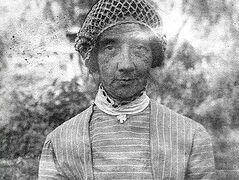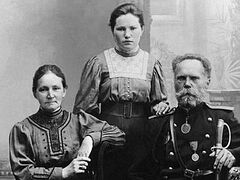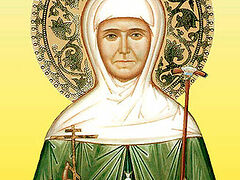On September 12, the Church prayerfully honored the memory of the only woman from the Russian Komi Republic to be glorified as a saint—the Virgin-Martyr Elisaveta (Yarigina).
A nun since childhood
 Elisaveta Alexandrovna Yarigina was born in northern Russia, in what is now the village of Safronovka, Arkhangelsk Province, in 1879. Her father, Alexander Matveyevich, was a peasant. From a young age she wanted to join a monastery, and she decided upon the Exaltation of the Cross Convent in Kyltovo, which was eighty miles from her native village. Her sister Anna also became a nun.
Elisaveta Alexandrovna Yarigina was born in northern Russia, in what is now the village of Safronovka, Arkhangelsk Province, in 1879. Her father, Alexander Matveyevich, was a peasant. From a young age she wanted to join a monastery, and she decided upon the Exaltation of the Cross Convent in Kyltovo, which was eighty miles from her native village. Her sister Anna also became a nun.
The Kyltovo monastery ran an almshouse where about fifty girls were cared for. Every year, more than 10,000 free meals were provided to the needy. There were numerous buildings: two churches, a brick building for monastic cells, a two-story house for priests, a granary, and other structures. The monastery raised high-yielding cows, mastered new farming technology, and helped its neighbors, providing them with calves. The sisters learned how to make exquisite furniture and weave household items from straw and also operated a photo workshop.
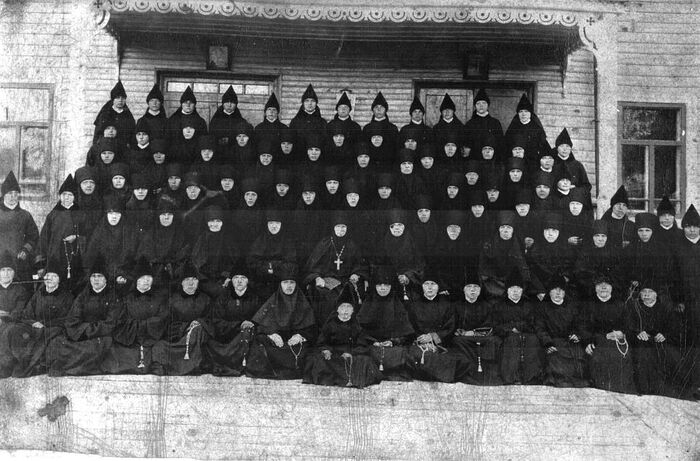 Sisters of the Exaltation of the Cross Convent in Kyltovo
Sisters of the Exaltation of the Cross Convent in Kyltovo
In such an “advanced” monastery labored the servant of Christ Elisaveta, and she was tonsured there in 1918 with the same name.
The church became a prison
That same year marked the beginning of a new, sorrowful path for the nuns, as the entire monastery was abolished. All valuables were confiscated, and there certainly was something to steal: The monastery had a carved oak iconostasis adorned with gold, silver, and diamonds. The sisters began to exist as a farming community, but they were able to continue living according to the monastic typikon and celebrate the Divine services.
Five years later, in 1932, the community was denounced and liquidated, and the residents had to look for another place to live.
That same year, the monastery buildings were given to a juvenile hall, but it was dissolved in 1929, and Kyltovo became part of the GULAG system. Throughout the thirty years of the camp’s existence, Germans, Polish soldiers, officers, and Kulaks1 were held within the monastery walls.
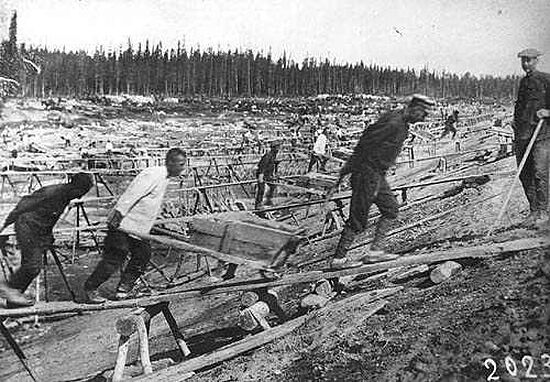 Correctional labor camps in Komi
Correctional labor camps in Komi
In our times, the cathedral in the Kyltovo Monastery has preserved the scaffolding floors where the prisoners slept at night. After the abolition of the prison in 1955, a communal farm was formed there and the cathedral was used as a club, a cafeteria, and a cement warehouse. Fortunately, Mother Elisaveta did not see the ruin and desecration of her native monastery.
In 1923, she moved to the village of Aikino, on the banks of the Vychegda River, forty-five miles from the monastery. Mother Elisaveta was disenfranchised. In practice, such people were restricted not only in voting rights: They also received no pension, benefits, or even food cards, and taxes were higher for them than for other citizens.
Twelve years later, Mother Elisaveta had to move to the village of Vylgort in the Komi Republic. By that time, many of the Kyltovo nuns had been arrested and exiled to camps. A commemorative plaque from the cells where the Kyltovo nuns served their time has been preserved at Solovki.
In the village of Vylgort, Mother served as the psalmist in the village’s Church of the Meeting of the Lord, singing and reading on the kliros, and like the majority of repressed nuns of that time, she worked part-time sewing blankets.
In 1937, the Presidium of the Syktyvkar District Executive Committee decided to convert the church into a movie theater, and around 1941, the Meeting of the Lord Church was destroyed. Today, the village has a chapel named for the New Martyr Euthymy of Vylgort, and in memory of the destroyed Meeting of the Lord Church, a new church is being built with the same name.
How false testimony changes a person’s fate
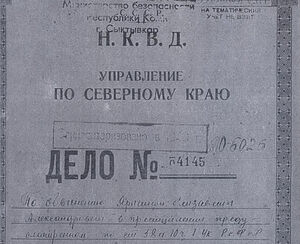 The case against Nun Elisaveta In August 1937, the ascetic was denounced, arrested, and charged with “active counter-revolutionary activity and spreading rumors about the imminent collapse of the collective farm system and Soviet power.” The prisoner meekly and laconically refused to testify and pleaded not guilty.
The case against Nun Elisaveta In August 1937, the ascetic was denounced, arrested, and charged with “active counter-revolutionary activity and spreading rumors about the imminent collapse of the collective farm system and Soviet power.” The prisoner meekly and laconically refused to testify and pleaded not guilty.
This is very edifying for modern Christians. How often we heap up slander against our neighbors without realizing what consequences it could have. At that time, one act of calumny was enough to get someonee shot.
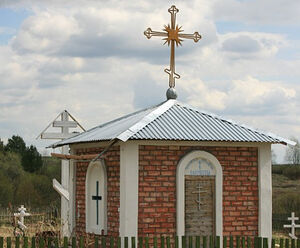 Chapel of Nun-Martyr Elisaveta at the cemetery of the Kyltovo Exaltation of the Cross Monastery On September 12, 1937, at the age of 57, Mother Elisaveta was shot in the vicinity of the city of Syktyvkar.
Chapel of Nun-Martyr Elisaveta at the cemetery of the Kyltovo Exaltation of the Cross Monastery On September 12, 1937, at the age of 57, Mother Elisaveta was shot in the vicinity of the city of Syktyvkar.
The ascetic is venerated at the place of her earthly labors, at the church in the village of Vylgort, and at the Exaltation of the Cross Convent in Kyltovo. The monastery cemetery has a chapel named in honor of Virgin-Martyr Elisaveta, where a festive Divine service is celebrated on her feast.
In her, the people of Komi have an intercessor for all their needs. Pilgrims are welcome to visit the holy monastery and help in the labor of its restoration.

